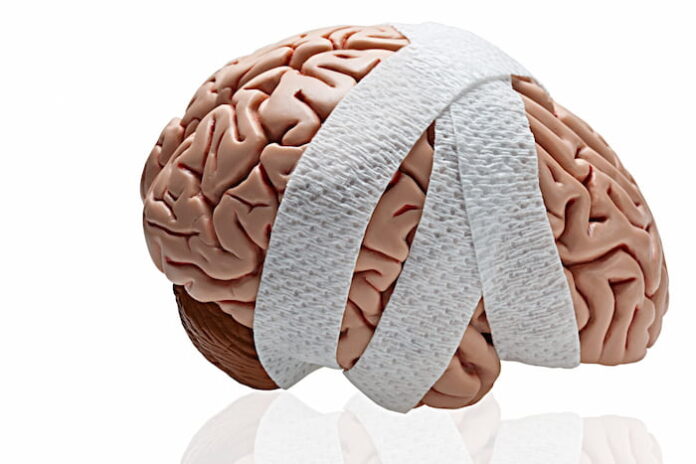Traumatic Brain Injury (TBI) is a serious health concern that affects millions of people worldwide, with young individuals being particularly susceptible. Well, you will get more info on traumatic brain injuries here to understand it better.
The brain, a delicate organ, is vulnerable to injury, and understanding TBI’s causes and treatment options is crucial for prevention and effective management.
In this article, we will delve into six significant causes of Traumatic Brain Injury in young people and explore the best available treatment options.
Causes of Traumatic Brain Injury in Young People
Accidents and Falls:
Accidents and falls are leading causes of TBI, especially among young individuals who are often engaged in high-risk activities. Falls from heights, sports-related injuries, and motor vehicle accidents can result in severe head trauma.
In some severe cases of traumatic brain injury, surgical procedures, including brain surgery with Dr. Gregory Lekovic, may be necessary to address structural damage and optimize patient outcomes.
Wearing protective gear, such as helmets, during sports activities and practicing safety measures can significantly reduce the risk of TBI due to accidents and falls.
Sports-Related Injuries:
Young athletes are at an increased risk of sustaining Traumatic Brain Injuries, particularly in contact sports like football, soccer, and hockey.
Concussions, a type of mild TBI, are common in these sports and can have long-term consequences if not properly managed.
Proper training on safe playing techniques, strict adherence to rules, and timely recognition and treatment of concussions are essential to prevent sports-related TBIs in young people.
Assaults:
Unfortunately, violence and assaults are another major cause of Traumatic Brain Injury in young individuals. Physical altercations, domestic violence, and other intentional acts of harm can result in severe head injuries.
Promoting awareness about the consequences of violence, educating on conflict resolution, and fostering a culture of non-violence can contribute to reducing TBI incidents related to assaults.
Motor Vehicle Accidents:
Motor vehicle accidents, including car crashes and motorcycle accidents, are significant contributors to Traumatic Brain Injury, especially in young drivers.
The impact forces involved in these accidents can lead to head injuries ranging from mild concussions to severe brain damage.
Strict adherence to traffic rules, wearing seat belts, and avoiding reckless driving are essential preventive measures to mitigate the risk of TBIs in motor vehicle accidents.
Bicycle Accidents:
Riding bicycles without proper protective gear, such as helmets, can result in serious head injuries in young people. Collisions with vehicles or stationary objects can lead to traumatic brain injuries that may have long-term consequences.
Encouraging the use of helmets, following traffic regulations, and providing education on safe cycling practices are crucial in preventing TBIs in bicycle accidents.
Penetrating Injuries:
Penetrating injuries, such as gunshot wounds or injuries from sharp objects, can cause direct damage to the brain tissue, leading to traumatic brain injury.
Young individuals may be exposed to violence or accidents involving weapons, making them susceptible to penetrating head injuries.
Efforts to reduce the prevalence of weapons in communities, promote gun safety, and implement strict security measures can help prevent such incidents.
Treatment Options for Traumatic Brain Injury
Emergency Medical Care:
Immediate medical attention is critical for individuals with traumatic brain injuries. Emergency medical care aims to stabilize the patient, control bleeding, and prevent further damage to the brain.
Prompt intervention can significantly improve outcomes and reduce the risk of complications.
Monitoring and Observation:
In less severe cases, close monitoring and observation may be sufficient. This involves regular neurological assessments to track changes in cognitive function, motor skills, and other critical functions.
Monitoring allows healthcare professionals to intervene if any deterioration occurs.
Rehabilitation Therapy:
Rehabilitation therapy is a crucial component of TBI treatment, focusing on restoring lost skills and promoting independence.
Physical, occupational, and speech therapy are often employed to help individuals regain motor function, enhance cognitive abilities, and improve communication skills.
Medication:
Medications may be prescribed to manage specific symptoms associated with traumatic brain injury, such as pain, seizures, or mood disorders.
It’s essential for healthcare professionals to carefully assess the patient’s needs and tailor medication regimens accordingly.
Cognitive Behavioral Therapy (CBT):
Cognitive Behavioral Therapy benefits individuals with TBI, especially those experiencing emotional and behavioral challenges.
CBT helps patients develop coping strategies, manage stress, and address psychological symptoms that may arise following a traumatic brain injury.
Surgical Intervention:
In cases of severe traumatic brain injury with significant bleeding or structural damage, surgical intervention may be necessary.
Surgery aims to alleviate pressure on the brain, repair damaged blood vessels, or remove hematomas. Skilled professionals perform neurosurgical procedures to optimize outcomes.
Wrapping Up
Traumatic Brain Injury in young people is a severe public health concern, and understanding its significant causes is crucial for prevention.
Implementing safety measures, promoting awareness, and fostering a culture of injury prevention can significantly reduce the incidence of TBI.
In the unfortunate event of a traumatic brain injury, prompt and appropriate medical care, coupled with rehabilitation and therapy, offers the best chance for recovery.
Read Also
- Ketamine-Assisted Therapies: Impacts on Employee WellbeingWorkplace stress is common today. Many employees feel tired, anxious, or burned out. Regular therapy can help, but some people need more support. Ketamine-assisted therapy is showing good results for mental health. A ketamine-assisted therapist guides each session safely. This therapy can improve mood, focus, and energy. Learning more about it can help teams stay… Read more: Ketamine-Assisted Therapies: Impacts on Employee Wellbeing
- The Future of Men’s Health: Why Telehealth Is Here to StayTelehealth isn’t just a pandemic trend that faded into the background. For Australian men, it has become one of the most practical, time-saving, and stress-free ways to manage everyday health — and it’s shaping the future of how we access care. Platforms like DOCTO, an Australian online doctor and specialist telehealth service, are leading the… Read more: The Future of Men’s Health: Why Telehealth Is Here to Stay
- How to Build a Simple, Clean Skincare Routine ?You don’t need a complicated skincare routine. It doesn’t have to be something that requires twenty different products and confusing steps. Your routine works well with just a few high-quality clean ingredients. The beauty industry keeps pushing more products, but your skin actually needs less. You only need a simple approach to get better results… Read more: How to Build a Simple, Clean Skincare Routine ?
- How Preventive Dental Care Supports Overall HealthHave you ever wondered how a simple dental checkup could impact your entire body? Oral health is more than just a bright smile. Studies show that poor dental habits can contribute to serious health problems. Gum disease and tooth decay are linked to heart disease, diabetes, and infections. Yet, many people overlook preventive dental care.… Read more: How Preventive Dental Care Supports Overall Health
- Seeing Clearly in a High-Tech World: A Deep Dive into Advanced Vision Care ServicesProtecting your eyesight isn’t optional—it’s essential. Modern eye care has evolved far beyond basic exams, offering advanced diagnostics, personalized treatments, and surgical innovations that keep vision sharp for life. A leading example is Intermountain Eye Center, home to specialists like Dr Fishburn Boise, where patients receive comprehensive, high-level vision care designed to preserve long-term eye… Read more: Seeing Clearly in a High-Tech World: A Deep Dive into Advanced Vision Care Services
- Why the Keto Diet Works for Some People—and Fails Dramatically for Others: An Ayurvedic Breakdown for Modern HealthcareThe keto diet has dominated weight-loss culture for years. For some people, it produces rapid fat loss, stable energy, and improved mental clarity. For others—especially those who gain weight easily—it leads to burnout, digestive distress, rebound weight gain, high cholesterol, and a metabolism that feels slower than before. Healthcare often frames this as a discipline… Read more: Why the Keto Diet Works for Some People—and Fails Dramatically for Others: An Ayurvedic Breakdown for Modern Healthcare







